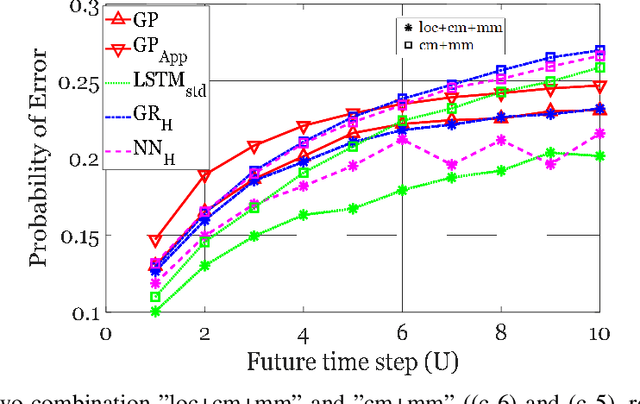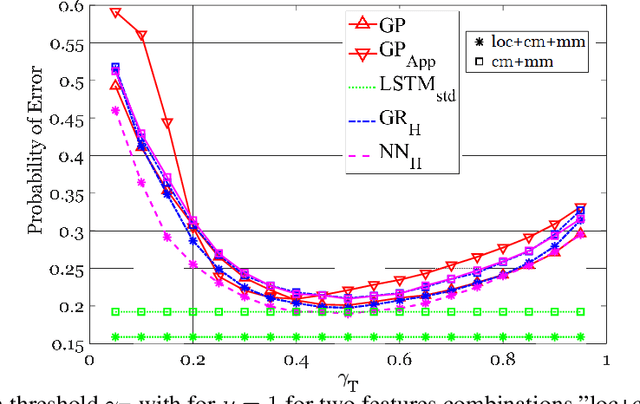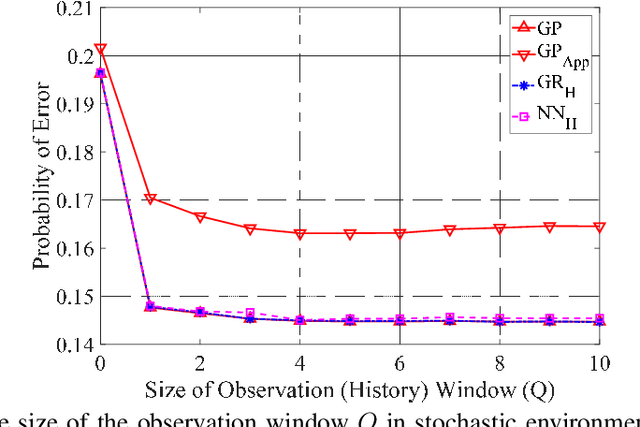Deep Learning and Gaussian Process based Band Assignment in Dual Band Systems
Paper and Code
Feb 28, 2019



We consider the band assignment (BA) problem in dual-band systems, where the basestation (BS) chooses one of the two available frequency bands (centimeter-wave and millimeter-wave bands) to communicate with the user equipment (UE). While the millimeter-wave band might offer higher data rate, there is a significant probability of outage during which the communication should be carried on the (more reliable) centimeter-wave band. We consider two variations of the BA problem, one-shot and sequential BA. For the former the BS uses only the currently observed information to decide whether to switch to the other frequency band, for the sequential BA, the BS uses a window of previously observed information to predict the best band for a future time step. We provide two approaches to solve the BA problem, (i) a deep learning approach that is based on Long Short Term Memory and/or multi-layer Neural Networks, and (ii) a Gaussian Process based approach, which relies on the assumption that the channel states are jointly Gaussian. We compare the achieved performances to several benchmarks in two environments: (i) a stochastic environment, and (ii) microcellular outdoor channels obtained by ray-tracing. In general, the deep learning solution shows superior performance in both environments.
 Add to Chrome
Add to Chrome Add to Firefox
Add to Firefox Add to Edge
Add to Edge